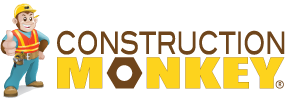Construction companies stand on three (3) pillars that define good business; Get Work, Do Work, and Monitor Work. If all three of them are done correctly and efficiently than the business will thrive. Getting work has a lot to do with generating an estimate on a custom product that has never been produced before, so what ensures that you have a good estimate?
In the manufacturing world, it becomes relatively easy to generate a cost estimate and to check if that estimate is accurate. For a microwave manufacturer, they can add up all of the parts, look at the processes it will take for assembly and come up with a total. Since they will be making thousands or millions of units it becomes easy to track the assembly line, shipping, and factory costs to ensure that their estimate is accurate. If it is not, they can adjust the process, parts, or selling price.
In construction it is the same, yet a little more complex. Estimating for a new school has the parts, assembly labor, and even the "factory costs" (jobsite and home office overhead) which appears easy enough to tally and add up, but the monitoring of the installation becomes more difficult. Since each new school has many more parameters than a commercial good produced at a factory, it is more difficult to take results from one product installed on a specific job and translate that into the next job.
Let's look at an example of installation of 2" pipe (pick your flavor). It is fairly easy to count the amount of pipe and accessories needed to complete the job, and it is fairly easy to get a material cost for that pipe. The installation process becomes more clouded. There are many other variables that will lead to a different installation costs including:
Estimators need to think globally about what it takes for that job to make it happen. They need to adjust the estimate in such a way to cover the costs or to reduce the costs to what it will really be. I agree that a lot of the parameters on cost are in the Construction team's hands (material staging, tools, quality people, etc), but there are still a lot that are jobsite, job type, or customer specific in which the estimator should account for them during the pricing phase.
Each project that goes out the door should be as unique as the project itself. My recommendation is to spend a minimum of an hour talking as a team to figure out what is unique to the project. The team should include management, construction, and estimating. This will not only lead to a better cost, but also an awareness of the issues that stand in front of everyone on the project. If you do, you will see better results in winning work and more consistent profit outcomes on projects.
In the manufacturing world, it becomes relatively easy to generate a cost estimate and to check if that estimate is accurate. For a microwave manufacturer, they can add up all of the parts, look at the processes it will take for assembly and come up with a total. Since they will be making thousands or millions of units it becomes easy to track the assembly line, shipping, and factory costs to ensure that their estimate is accurate. If it is not, they can adjust the process, parts, or selling price.
In construction it is the same, yet a little more complex. Estimating for a new school has the parts, assembly labor, and even the "factory costs" (jobsite and home office overhead) which appears easy enough to tally and add up, but the monitoring of the installation becomes more difficult. Since each new school has many more parameters than a commercial good produced at a factory, it is more difficult to take results from one product installed on a specific job and translate that into the next job.
Let's look at an example of installation of 2" pipe (pick your flavor). It is fairly easy to count the amount of pipe and accessories needed to complete the job, and it is fairly easy to get a material cost for that pipe. The installation process becomes more clouded. There are many other variables that will lead to a different installation costs including:
- Height of installation
- Location on jobsite of installation
- Person installing product
- Cleanliness of jobsite
- Tools available to workers to install product
- Time when product is being installed (are other materials partially blocking access to installation)
- Moral of crew
- Tolerance levels for a quality installation (can you install it anywhere between 8' AFF and 10' AFF or does it need to be between 8'2" and 8'3" AFF)
- Safety requirements of the jobsite and installation
- Customer's proficiency to operate a schedule and to not stack trades
Estimators need to think globally about what it takes for that job to make it happen. They need to adjust the estimate in such a way to cover the costs or to reduce the costs to what it will really be. I agree that a lot of the parameters on cost are in the Construction team's hands (material staging, tools, quality people, etc), but there are still a lot that are jobsite, job type, or customer specific in which the estimator should account for them during the pricing phase.
Each project that goes out the door should be as unique as the project itself. My recommendation is to spend a minimum of an hour talking as a team to figure out what is unique to the project. The team should include management, construction, and estimating. This will not only lead to a better cost, but also an awareness of the issues that stand in front of everyone on the project. If you do, you will see better results in winning work and more consistent profit outcomes on projects.
